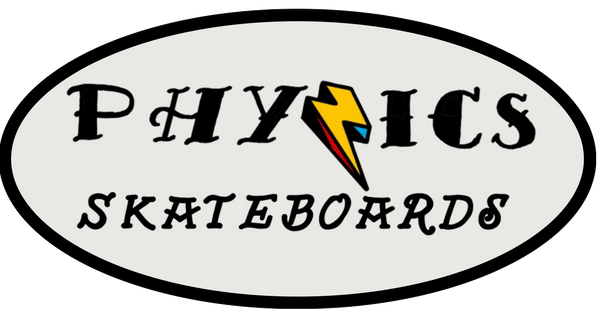Understanding Concave in Skateboard Decks
Understanding Concave in Skateboard Decks
What Is Concave in a Skateboard Deck?
Concave refers to the curvature of a skateboard deck's surface between the nose and tail. It describes how the sides of the deck curve upward, forming a slight "U" shape when viewed from the front or back. This feature is not just for aesthetics—it significantly influences the performance, comfort, and control of the skateboard.
How Is Concave Measured?
The concave of a skateboard deck is typically measured by the depth of the curve, expressed in millimeters. Manufacturers achieve this curvature by pressing the wood into molds during the deck's construction process. Concave depth is categorized as low, medium, or high, depending on the degree of upward curvature:
- Low Concave: Subtle curvature, providing a flatter deck.
- Medium Concave: A balanced curve suitable for most riders.
- High Concave: Steeper curves for enhanced control and trick execution.
How Concave Impacts Skateboarding
The concave of a skateboard deck directly affects how it feels and performs under your feet. Here are the main aspects influenced by concave:
- Board Control: More pronounced concave helps lock your feet in place, offering better control during tricks and transitions.
- Pop: Higher concave enhances the board's pop, making it easier to perform ollies and other airborne tricks.
- Comfort: A flatter deck (low concave) provides a more comfortable stance, ideal for cruising and long rides.
- Versatility: Medium concave strikes a balance, making it suitable for a variety of skateboarding styles.
Types of Concave and Their Best Uses
Different concave shapes are suited for specific styles of skateboarding. Here’s a breakdown:
| Type of Concave | Characteristics | Best For |
|---|---|---|
| Radial Concave | Smooth, even curve forming a continuous "U" shape. | All-around skateboarding; ideal for beginners and versatile skaters. |
| Progressive Concave | Steeper edges with a flatter middle for enhanced foot placement. | Street skating and technical tricks. |
| W Concave | A "W" shape adds an extra curve in the center for maximum foot grip. | Downhill and high-speed skating. |
| Flat Concave | Minimal or no curvature for maximum stability. | Cruising and longboarding. |
| Asymmetrical Concave | Different concave levels on each side of the board. | Skaters who prefer specific trick setups. |
How to Choose the Right Concave for You
Choosing the right concave depends on your skill level, preferred skateboarding style, and personal comfort. Here’s how to decide:
- Beginners: Start with a medium or radial concave for versatility and ease of use.
- Street Skaters: Opt for progressive or high concave for better trick performance.
- Vert or Park Skaters: Medium or high concave offers control on ramps and transitions.
- Cruisers: Low or flat concave prioritizes comfort and stability for long rides.
Frequently Asked Questions
Does concave affect durability?
No, concave does not directly impact a skateboard deck's durability. Durability is determined by the materials and construction quality.
Is more concave better?
It depends on your preferences and skating style. High concave offers better trick control, while low concave provides more comfort for cruising.
Can I customize concave?
While most decks come with preset concave shapes, custom boards can be made to suit specific needs, depending on the manufacturer.
